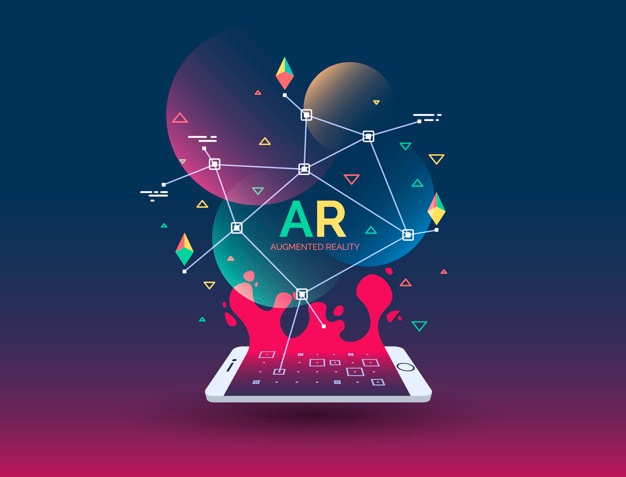The global Augmented Reality (AR) market was estimated at $17.67 billion in 2020, with the global AR market expected to continuing growing at an annual compound growth rate of 43.8% from 2021 to 2028, to reach $340.16 billion by 2028.
What is Augmented Reality?
To understand the capabilities of Augmented Reality alongside the applications of AR within Europe, it is important to define what AR is. Augmented Reality is an enhanced version of the real physical world that is achieved through the use of digital visual elements, sound, or other sensory stimuli delivered via technology. In recent years Augmented Reality has made a huge impact on our daily lives. Augmented Reality has been embraced by various kinds of industries, this is as a result of the potential that this technology carries has made it easily adoptable by businesses of various fields, ranging from those with educational, productivity to medical purposes.
AR on Mobile Devices
The amount of Mobile AR apps has surged, by 2022 it was predicted that there were 4,670 million consumer mobile embedded AR apps in the market. The ability of AR to provide new customer and learning experiences means it is likely that brands will leverage Augmented Reality as part of its sales and marketing strategies. This compounded with increased access to AR through mobile technologies, means more AR-powered content and applications can be expected in the coming years.
AR in Shopping and Retail
Augmented Reality technologies have been deployed within the retail industry, to improve the customer shopping experience. For instance, in the clothing retail market AR has been employed to further the fitting room experience. By providing customers with access to virtual fitting room technology, allowing individuals to try on clothes and view these items in a 360-degree convenient experience, for customers who cannot come into a physical store. A similar deployment of AR can be found in IKEA’s online shopping experience, where customers see what furniture and other products might look in their own homes. These applications of AR exemplify the increased convenience and scalable possibilities for the technology.
AR Events
Catalysed by the pandemic, the popularity of Augmented Reality events has surged. These new technological events have enabled companies to organise virtual careers and sports events, these events have allowed an increase in capacity for events as well as global participation. The future of these events have a large potential for educational learning, seminars and access to a global learner.
AR in Remote Education
Schools across Europe have been one of the most susceptible industries to COVID-19 disruption. However, Augmented Reality has a number of applications that has been used to improve the learning experience for e-learning students. The technology has the capability to provide at-home teaching for students, through the available expanding visual content, which are useful for visual-focused learners. Additionally, the primary advantage of Augmented Reality in the educational space is the ability for a student to inspect a virtual model from many different angles on their own. By having a 360-degree model that can be inspected students can better examine and understand certain concepts.
Within our AR4EFL project we are aiming to create a realistic learning environment for leaners of a second language to motivate them to learn, with the utilisation of Augmented Reality to guide their learning of English as a second language.
For more information please visit our website: https://ar4efl.eu/
And follow us on Facebook: https://www.facebook.com/AR4EFL

